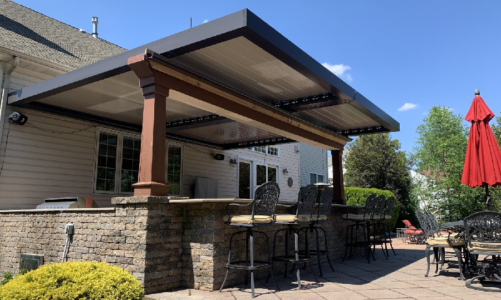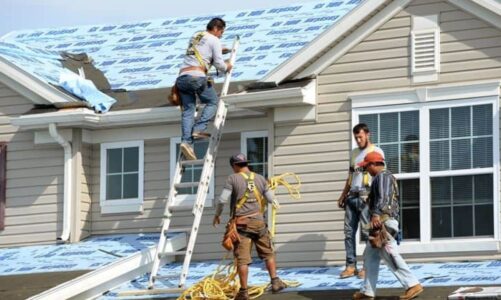If the weather is particularly windy, rainy or snowy, be aware of the effects that this can have on your roof. There are five things you need to know about what can go wrong and how you can prevent it.
- Be aware of the effects that wind has on a roof. Winds can loosen shingles and in severe storms, cause entire shingles to blow off of your home. Check for missing shingles and make sure all are properly secured to your roof. Also, check for any broken or cracked shingles and look for signs of any damage from the wind.
- When there is heavy rain or snowfall, gutters can become blocked from leaves and debris which will prevent the water from draining off your roof properly. Clear all gutters so that water does not begin to pool at the sides of your house and then seep underneath shingles and into the roof decking, causing rot and possible leakage into your home.
- Check around areas with flashing (sides of chimneys, skylights) for leaks or gaps that may allow moisture inside your home. Make sure flashing is properly sealed and if you notice any issues, call a professional roofer to come out and repair it immediately before more damage is caused.
What to Do
When weather strikes, it can be hard to know what to do. Here are a few tips on how you should react when the weather wreaks havoc on your roof.
Contact your insurance company
Make sure you have this information on hand: your policy number, claim number, and telephone number for your agent. Don’t pay for any repairs until you’ve spoken with your insurance company and found out what is covered. If you do pay for repairs, save all receipts.
Contact the roofing service department at reliable roofing
If there is a chance that the damage may get worse, cover the roof with a tarp or plywood immediately to prevent additional water damage inside of your home. Avoid going on the roof during or after a storm if possible, to prevent injury; however, if you must go on the roof, wear rubber-soled shoes and be careful of loose shingles and exposed nails.
Be prepared to wait for an inspection from reliable roofing and/or your insurance company before repairs can begin
Depending on how many homes in our area were damaged by the storm, there may be a wait list for service calls as your roofing insurer works through its backlog of claims as quickly as possible. You should not begin any repairs until your roofing insurance company inspects the extent of the damage.
Trim trees near your home’s roofline
Overhanging branches can cause damage to your roof when they scrape against it during high winds or snowstorms, and falling leaves could clog up gutters and downspouts, causing water to back up under the shingles and into your home’s interior.
Make a list of what needs to be repaired or replaced
Ask contractors to provide an itemized estimate that includes a description of the work and the materials they’ll use. Ideally, you should hire a roofing contractor who has been in business for at least five years and specializes in roofs rather than someone who dabbles in everything from remodeling kitchens to putting on decks.
Conclusion
If the weather has wreaked havoc on your roof, there are five things you must do. First, make sure all adults, children, and pets are out of the house and to a safe place. Next, call your insurance agency to file a claim. Third, check for damage around your property, and document it with photos. Fourth, find a good roofing contractor to assess the damages, and finally, sit tight and let them do their job.




